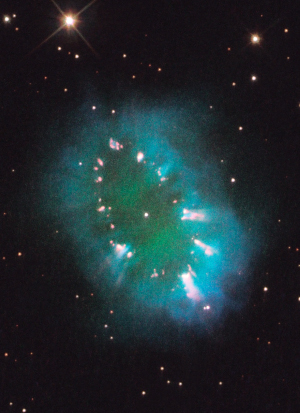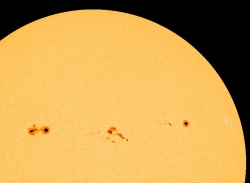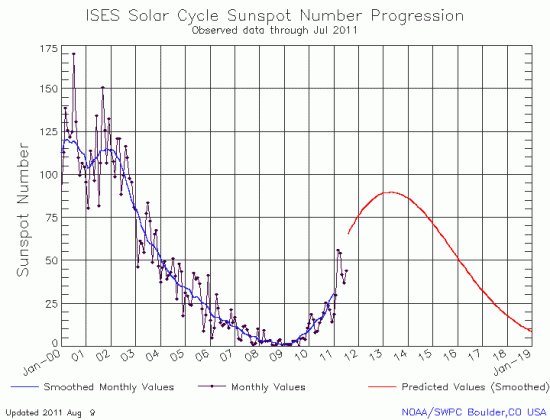Thirty years ago IBM introduced its first pc
Fifty years ago tomorrow the Berlin Wall went up
Fifty years ago tomorrow the Berlin Wall went up. Two stories:
- The tunnel digger, about a man who helped dig tunnels to get East Germans to freedom.
- An archive reprinting of a Der Spiegel article published shortly after the wall was build, describing the tepid response of the Western powers to this act of oppression.
Fifty years ago tomorrow the Berlin Wall went up. Two stories:
- The tunnel digger, about a man who helped dig tunnels to get East Germans to freedom.
- An archive reprinting of a Der Spiegel article published shortly after the wall was build, describing the tepid response of the Western powers to this act of oppression.
On Christmas Eve 1968 three Americans became the first humans to visit another world. What they did to celebrate was unexpected and profound, and will be remembered throughout all human history. Genesis: the Story of Apollo 8, Robert Zimmerman's classic history of humanity's first journey to another world, tells that story, and it is now available as both an ebook and an audiobook, both with a foreword by Valerie Anders and a new introduction by Robert Zimmerman.
The print edition can be purchased at Amazon or any other book seller. If you want an autographed copy the price is $60 for the hardback and $45 for the paperback, plus $8 shipping for each. Go here for purchasing details. The ebook is available everywhere for $5.99 (before discount) at amazon, or direct from my ebook publisher, ebookit you don't support the big tech companies and the author gets a bigger cut much sooner.
The audiobook is also available at all these vendors, and is also free with a 30-day trial membership to Audible.
"Not simply about one mission, [Genesis] is also the history of America's quest for the moon... Zimmerman has done a masterful job of tying disparate events together into a solid account of one of America's greatest human triumphs."--San Antonio Express-News
Appeals court rules against Obama healthcare law
The mystery of Vesta’s south pole depression
Now available in hardback and paperback as well as ebook!
From the press release: In this ground-breaking new history of early America, historian Robert Zimmerman not only exposes the lie behind The New York Times 1619 Project that falsely claims slavery is central to the history of the United States, he also provides profound lessons about the nature of human societies, lessons important for Americans today as well as for all future settlers on Mars and elsewhere in space.
Conscious Choice: The origins of slavery in America and why it matters today and for our future in outer space, is a riveting page-turning story that documents how slavery slowly became pervasive in the southern British colonies of North America, colonies founded by a people and culture that not only did not allow slavery but in every way were hostile to the practice.
Conscious Choice does more however. In telling the tragic history of the Virginia colony and the rise of slavery there, Zimmerman lays out the proper path for creating healthy societies in places like the Moon and Mars.
“Zimmerman’s ground-breaking history provides every future generation the basic framework for establishing new societies on other worlds. We would be wise to heed what he says.” —Robert Zubrin, founder of the Mars Society.
All editions are available at Amazon, Barnes & Noble, and all book vendors, with the ebook priced at $5.99 before discount. All editions can also be purchased direct from the ebook publisher, ebookit, in which case you don't support the big tech companies and the author gets a bigger cut much sooner.
Autographed printed copies are also available at discount directly from the author (hardback $29.95; paperback $14.95; Shipping cost for either: $6.00). Just send an email to zimmerman @ nasw dot org.
Who’s the real reporter?
How Iron Age people decorated their homes
Archeologists have discovered a 2,600-year-old wall mural used as a wall decoration during the Iron Age.
Archeologists have discovered a 2,600-year-old wall mural used as a wall decoration during the Iron Age.
Leaving Earth: Space Stations, Rival Superpowers, and the Quest for Interplanetary Travel, can be purchased as an ebook everywhere for only $3.99 (before discount) at amazon, Barnes & Noble, all ebook vendors, or direct from my ebook publisher, ebookit.
If you buy it from ebookit you don't support the big oppressive tech companies and I get a bigger cut much sooner.
Winner of the 2003 Eugene M. Emme Award of the American Astronautical Society.
"Leaving Earth is one of the best and certainly the most comprehensive summary of our drive into space that I have ever read. It will be invaluable to future scholars because it will tell them how the next chapter of human history opened." -- Arthur C. Clarke
Some questions about today’s hypersonic test flight
Here are some additional stories describing today’s test flight of the Hypersonic Test Vehicle.
- Los Angeles Times: Falcon hypersonic vehicle test flight fails
- Aviation Week: Telemetry Lost During Hypersonic Test Flight
- DARPA: HTV-2 collects unique data during several phases of second flight
I have several questions, and no answers:
Ray Lynch – The True Spirit of Mom and Dad
Legal rabbit farm raided and destroyed
The abuse of power: A legal rabbit farm raided and destroyed by Colorado police.
“They’ve destroyed me emotionally, socially and professionally,” Bell said, listing numerous ways in which local animal rights activists have publicized information about the case in an effort to make her and her four children — all adults who haven’t lived under her roof for several years — look bad. But that’s not all.
“They’ve made 4-H kids all across Colorado just sob,” she said, “because I am their 4-H connection.” Bell noted that 12 of the seized rabbits belong to 4-H kids who were planning to show them at upcoming fairs — two at the Jefferson County Fair that begins Thursday and the remaining 10 at the Colorado State Fair which runs from Aug. 26 to Sept. 5 in Pueblo.
The abuse of power: A legal rabbit farm raided and destroyed by Colorado police.
“They’ve destroyed me emotionally, socially and professionally,” Bell said, listing numerous ways in which local animal rights activists have publicized information about the case in an effort to make her and her four children — all adults who haven’t lived under her roof for several years — look bad. But that’s not all.
“They’ve made 4-H kids all across Colorado just sob,” she said, “because I am their 4-H connection.” Bell noted that 12 of the seized rabbits belong to 4-H kids who were planning to show them at upcoming fairs — two at the Jefferson County Fair that begins Thursday and the remaining 10 at the Colorado State Fair which runs from Aug. 26 to Sept. 5 in Pueblo.
Joe Wilson was right when he accused Obama of lying
“The left is going to have to compromise and cut some domestic welfare spending, and the right is going to have to compromise and cut some military spending.”
From a Tea party activist: “The left is going to have to compromise and cut some domestic welfare spending, and the right is going to have to compromise and cut some military spending.”
From a Tea party activist: “The left is going to have to compromise and cut some domestic welfare spending, and the right is going to have to compromise and cut some military spending.”
Contact quickly lost during third test flight of hypersonic plane
Contact was quickly lost today soon after a hypersonic glider was released by its rocket launcher during a test flight. More here.
Contact was quickly lost today soon after a hypersonic glider was released by its rocket launcher during a test flight. More here.
Hubble captures a necklace in space

Who needs aliens and imagined cities on the moon when you have a reality that produces such strange and beautiful things as the image on the right?
On July 2, the Hubble Space Telescope took this image of a planetary nebula, aptly dubbed the Necklace Nebula. As the caption explains,
A pair of stars orbiting close together produced the nebula, also called PN G054.2-03.4. About 10,000 years ago one of the aging stars ballooned to the point where it engulfed its companion star. The smaller star continued orbiting inside its larger companion, increasing the giant’s rotation rate.
The bloated companion star spun so fast that a large part of its gaseous envelope expanded into space. Due to centrifugal force, most of the gas escaped along the star’s equator, producing a ring. The embedded bright knots are dense gas clumps in the ring.
The binary still exists, and can be seen as the star in the center of the necklace. The two stars are now only a few million miles apart and complete an orbit around each other in about a day.
Japan revises its tsunami warning system following March earthquake/tsunami
83% of Obamacare Grants Awarded to States That Supported Obama in 2008
So you think Obamacare isn’t about power and control? 83% of Obamacare grants were awarded to states that supported Obama in 2008.
So you think Obamacare isn’t about power and control? 83% of Obamacare grants were awarded to states that supported Obama in 2008.
A government that kills
500 billion new reasons to repeal Obamacare
TSA lawyers argued yesterday they did nothing wrong in arresting a protester who removed his shirt and pants at a security checkpoint
Thugs: TSA lawyers argued yesterday they did nothing wrong in arresting a protester who removed his shirt and pants at a security checkpoint to reveal the fourth amendment of the Bill of Rights written on his chest.
Thugs: TSA lawyers argued yesterday they did nothing wrong in arresting a protester who removed his shirt and pants at a security checkpoint to reveal the fourth amendment of the Bill of Rights written on his chest.
Astonishing underwater pictures from a maze carved inside a glacier
The state of the Himalayan glaciers
A new study of the glaciers of the Himalayas by the Indian Space Research Organization and the Geological Survey of India has found that, based on satellite data, 2184 were retreating, 435 were advancing, and 148 showed no change.
It is refreshing that the scientists and politicians involved in India refused to cite global warming as a cause, referring instead to the “natural cyclic process”. As India’s former environment minister Jairam Ramesh noted, “There is no doubt that the general health of the Himalayan glaciers is worsening, but the truth is incredibly complex.”
A new study of the glaciers of the Himalayas by the Indian Space Research Organization and the Geological Survey of India has found that, based on satellite data, 2184 were retreating, 435 were advancing, and 148 showed no change.
It is refreshing that the scientists and politicians involved in India refused to cite global warming as a cause, referring instead to the “natural cyclic process”. As India’s former environment minister Jairam Ramesh noted, “There is no doubt that the general health of the Himalayan glaciers is worsening, but the truth is incredibly complex.”
Danielle “ate the sandwich” Anderson – Things we have in common
Making hard choices
A new poll shows that the congressional special election to replace Anthony Weiner in the traditionally Democratic district in Queens/Brooklyn, New York is surprisingly competitive.
The poll found [Democrat] Weprin, a state assemblyman, leading [Republican] Turner, a retired broadcasting executive, 48 percent to 42 percent in the race for the Democratic-friendly Queens and Brooklyn-area seat.
Two thoughts: First, this poll fits with another that shows for the first time a majority of adults don’t want their own Congressman reelected. If so, it shouldn’t be surprising that the Democrat appears so weak in Brooklyn/Queens, a place I lived for most of my life and a place I found to be so knee-jerk Democrat that you couldn’t admit to being Republican without risking being blacklisted from all things.
Second, despite the mess the federal government is in as well as the disgraceful scandal that caused the previously elected Democratic Congressman to resign, it is also not surprising that 48 percent of the population still wants to vote Democrat in this district. This is my biggest fear: the continuing unwillingness of too many Americans to honestly face our government’s budget problems.
» Read more
The very slow ramp up to maximum

As it does every month, NOAA’s Space Weather Prediction Center released today its monthly updated graph of the Sun’s solar cycle sunspot activity. I have posted the July graph below.
For the first time in four months there was a increase in sunspot activity, albeit small. The sun has been even more active in August, as shown by the flurry of sunspots on its face from August 1 (shown on the left) and the August 8 solar flare, the most powerful produced in four years.
This monthly graph, however, continues to suggest that the next solar maximum will be very very weak, even weaker than the most up-to-date predictions for the next solar maximum.

Bat stowaway forces airplane to return to airport
2012 is gonna be nasty
There’s no doubt that we’re in for a high level of personal nastiness and invective. This election is not going to be about some minor adjustment to spending, or some trifling adjustment of tax rates, or some nibbling at the edges of the regulatory state. What is at stake in the 2012 election is the continuation of a world-view; a political philosophy that sees ever-larger government as the cure to whatever ails us. This next election is the first big battle for the survival of that worldview as the majority view of the political class, or the survival of the insurgent TEA party idea that government has become to large, too intrusive, and too expensive, so therefore must be radically reduced. There is little room to compromise between these two visions of government. Indeed, in most ways, they are worldviews that are mutually exclusive. Over the next decade or so, we are going to learn which of these two views will prevail, and if the US, as presently composed, will remain a united polity.
There’s no doubt that we’re in for a high level of personal nastiness and invective. This election is not going to be about some minor adjustment to spending, or some trifling adjustment of tax rates, or some nibbling at the edges of the regulatory state. What is at stake in the 2012 election is the continuation of a world-view; a political philosophy that sees ever-larger government as the cure to whatever ails us. This next election is the first big battle for the survival of that worldview as the majority view of the political class, or the survival of the insurgent TEA party idea that government has become to large, too intrusive, and too expensive, so therefore must be radically reduced. There is little room to compromise between these two visions of government. Indeed, in most ways, they are worldviews that are mutually exclusive. Over the next decade or so, we are going to learn which of these two views will prevail, and if the US, as presently composed, will remain a united polity.
Kansas becomes the second state to return a large federal grant awarded to them by Obamacare.
Kansas becomes the second state to return a large federal grant awarded to them by Obamacare.
‘Every state should be preparing for fewer federal resources, not more,’ Governor Brownback said in a statement. ‘To deal with that reality, Kansas needs to maintain maximum flexibility. That requires freeing Kansas from the strings attached to the Early Innovator Grant.’
Kansas becomes the second state to return a large federal grant awarded to them by Obamacare.
‘Every state should be preparing for fewer federal resources, not more,’ Governor Brownback said in a statement. ‘To deal with that reality, Kansas needs to maintain maximum flexibility. That requires freeing Kansas from the strings attached to the Early Innovator Grant.’
Wisconsin Republicans hold off Democrats in recall elections
Sun unleashes its largest solar flare in years
Bonnie Raitt – Angel from Montgomery
Restaurants Brace for Job-Killing Obamacare Regulations
Repeal it: Chain restaurants struggle with Obamacare regulations requiring all menus to include calorie information.
Under the new rules, if [a chain] wanted to introduce a new item, such as a crab cake pizza, [they’d] have to replace the signs in all of [their] stores, sucking time and money that could otherwise be used to build [the] business.
And:
“So what it comes down to is this: The federal government has passed a law requiring us to build new signs, or buy new menu boards, and to put on those signs and menu boards information which we already provide, even though it is unlikely to change eating habits, at a cost of over a million dollars we will divert from and be unable to spend on jobs,” cautioned Puzder.
Repeal it: Chain restaurants struggle with Obamacare regulations requiring all menus to include calorie information.
Under the new rules, if [a chain] wanted to introduce a new item, such as a crab cake pizza, [they’d] have to replace the signs in all of [their] stores, sucking time and money that could otherwise be used to build [the] business.
And:
“So what it comes down to is this: The federal government has passed a law requiring us to build new signs, or buy new menu boards, and to put on those signs and menu boards information which we already provide, even though it is unlikely to change eating habits, at a cost of over a million dollars we will divert from and be unable to spend on jobs,” cautioned Puzder.



